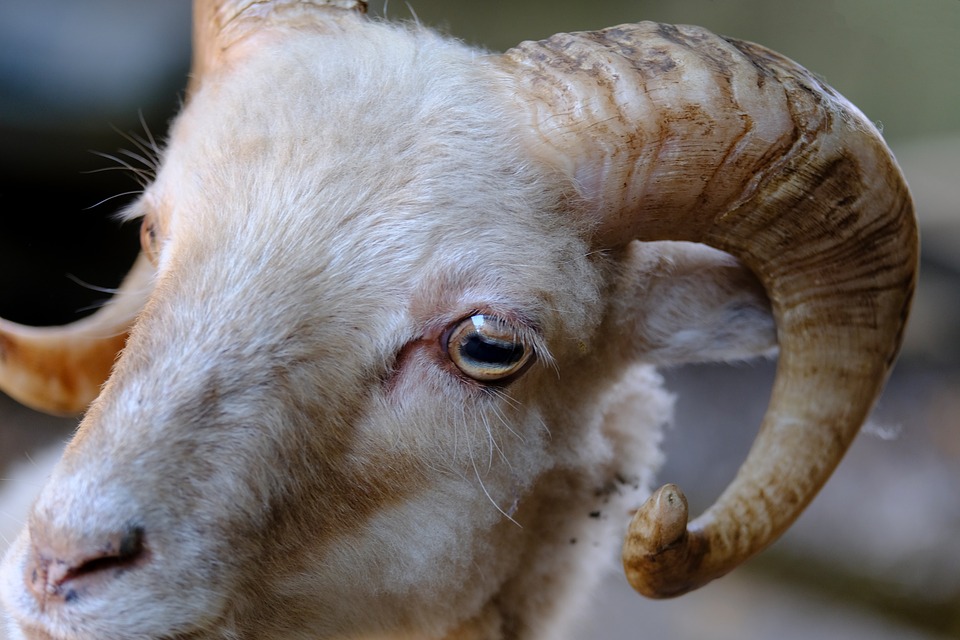You never know just how the world looks from someone else’s perspective. This is even more true when you consider that humans will literally NEVER know what the world looks like through the eyes of some of our most visually-gifted and unique neighbors. Today, ilumin is taking a look at vision from the eyes of some of Henry Doorly Zoo’s sharpest critters!

Cheetahs – When approaching your destination, you slow your car from the mind-blowing speed of 25mph to a crawl, allowing your eyes to focus on the address of the house your GPS already told you was where you want to be. Now imagine running at upwards of 45 miles per hour, heading toward a moving target that is biologically designed to match its surroundings. Welcome to the world of the cheetah.
While we are all familiar with the speed of a cheetah, we may not always consider how speed impacts their sight. Cheetahs come equipped with several genetic factors to help them counter environmental impacts. This ranges from the black streaks under their eyes, which reduce glare, forward facing eyes which provide binocular vision, and a stabilization mechanism which helps their eyes stay focused no matter how fast they’re moving.
Find them in the African Grasslands

Camels – After a day in the sun you may find yourself reaching for the eyedrops and a cold compress to cool your sunburned eyes. Dry, itchy, and irritated, humans aren’t adapted to the harsh heat and dry conditions, but our desert-dwelling humpbacked friends have it all figured out!
Camels are born with not two, but three eyelids. The first set function much like our own, opening and closing up and down. One striking distinction is the thick set of eyelashes you’ll find on their standard lids. This keeps the eye shaded, and serves to filter the air, keeping sand from blowing in.
The extra lid opens from the side, and is virtually transparent. This serves as a screen, protecting the camel’s eye from the wind and sand. With each blink, sand is dusted away, having never made contact with the cornea.
Find them seasonally offering rides, and in the petting zoo

Starfish – Have you ever wondered if a starfish can see all of those little hands diving into the touch tank to tickle them? Most think it’s unlikely, as looking at the little star of the aquarium, you won’t see a single eye. If, however you know what to look for, you’ll find they can have dozens. At the end of each arm, starfish have a single red or black dot. This is the animal’s way of seeing. It doesn’t interpret shapes as solidly as humans, (about 500 times worse, actually) but it detects light and movement through each of its multi-lensed sensors and the end of each arm. If you’ve ever seen a starfish lift an arm, or twist and lift multiple, this means they’ve noticed a change in their environment and are checking it out. They may not have complex eyes like ours, but starfish are well-armed to see what matters, and in a 360 degree field, at that!
Find them in the Aquarium

Bats – Blind as a what now? While many people believe that bats have less than stellar vision, this simply isn’t true. Since microbats’ (the carnivorous kind) prey is mostly active at night, it has simply developed an additional method of “seeing” using sonar. Its eyes function excellently, but echolocation allows the bat to hunt in the absolute dark.
Fruit bats don’t rely on sonar at all, and have developed UV-sensitive cones, which help it avoid predators and detect UV-reflecting flowers. While fruit bats are some of our best pollinators, microbats keep pests like mosquitos at bay. Not only are bats our friends, they have better vision than many of us! Especially at twilight, as our eyes struggle to adjust to the changing light, bats are sharp as tacks!
Assuming a bat can’t see is like assuming you can’t walk just because you learned to swim. High Five for our not-so-creepy friends!
Find them in Kingdoms of the Night

Four-Eyed Fish – We asked. He doesn’t mind being called four eyes, even though it is a misnomer. The four eyed fish actually have only two eyes, but with one interesting distinction. The original bi-focal, this guy’s eye is divided at the center, the bottom half focusing under water while the top half is designed to see above. This gives the fish a unique opportunity to find food above the surface, while watching for predators below.
Find them in the Wild Life Pavillion

Aye-Aye – Not as agreeable as they sound, these shy little lemurs make your favorite introvert look like the life of the party. Once thought to be extinct, the aye-aye’s ability to lay low may be to thank for their upgrade to “endangered” status. In their native habitat of Eastern Madagascar, they are seen as a bad omen, and were hunted to protect farms and families.
Active only after dark, these mini primates feature a long, slender middle finger on each hand, which they use to tap on trees and listen for the rustling of bugs and larvae within. Like most nocturnal creatures, the aye-aye’s eyes are adapted to the dark. Unlike most nocturnal animals, however, the aye-aye has retained its ability to detect color.
Evolution likes to slowly remove any abilities and functions we don’t use over several generations, but though aye-ayes have been nocturnal for thousands of years, they haven’t become color blind. Aye-ayes are Prosimians, as are bush babies, tarsiers, and lemurs. One trait shared by most of the prosimian family is the distinct eye shape and size. This family’s eyes are among the largest relative to its size in the entire animal kingdom!
Find them at Expedition Madagascar

Goats – While headbutting, fainting, and spitting remain their better-known and slightly less-charming hallmarks, goats are intriguing and exceptional for countless reasons! Have you ever wondered about their rectangular and horizontally positioned pupils?
This horizontal orientation allows for a panoramic view, giving the wearer (this includes deer, sheep, and a number of other grazing ruminants) to see predators coming from an up to 340 degree angle.This wide-angled gaze also cuts down on glare by eliminating much of the animals’ vertical view.
This is of little help when the animal lowers its head to graze, but goats eyes automatically orient upward when their head goes down, keeping their gaze horizontal at all times. Bahhhhhmazing!
Find them in the African Grasslands
Learning how animals adapt to their environments can teach us so much about our own evolution. We are grateful to the generations of research that give us the opportunity to understand, adapt, and grow.
We want to know! What are the exhibits and attractions that keep you coming back to the zoo?







